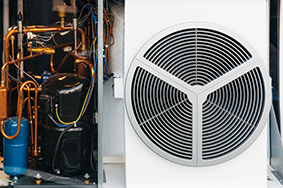Energy Savings
In some buildings and structures the cost for air conditioning reaches 60% of the total electrical bill, it is incumbent upon us to take all necessary steps to conserve energy, thus saving us money and reducing the load on the power grid.
1. Tips for the individual builder
a. Plan your home based on materials designed to prevent heat stress penetration, such as Ytong blocks or equivalent.
b. Plan windows with internal and external shading.
c. Plan on double or triple pane insulating glass.
d. Plan a well insulated roof.
e. Plan for hermetically wind sealed windows and shutters.
f. Plan on energy saving lighting which does not emit much heat. There are light bulbs on the market that are more costly initially, but provide a return on investment during day-to-day use.
g. Plan for air conditioners with the appropriate output, with no excess, to lower the load on the power grid. One can use the virtual engineer software program or consult an engineer.
h. The recommendation is to invest a little more up front in purchasing inverters or VRF type air conditioners, which under partial load can save up to 50% of the energy consumption compared with conventional A/Cs due to the higher energy efficiency at partial loads.
i. For central air conditioning systems, it is recommended to add sensors to the windows (micro-switches), so that an open window will prevent the specific room unit from operating!
j. In chiller of VFR type systems it is recommended to connect the units to the alarm system volume sensor so that the specific room unit will shut off when the room is unoccupied.
k. If you are non-smokers, install air conditioners planned without a fresh- air mechanism – you can aerate the house during the morning or evening hours.
l. Purchase air conditioners with high energy efficiency (COP). The higher the efficiency the greater the cost savings.
2. General
a. Avoid using the air conditioning system with a window open.
b. If you have a very old air conditioner, it is recommended to replace it with a new one. The new air conditioners are much more energy efficient than the older units so you will recoup your investment quite quickly (under discussion is a nation-wide program to scrap old air conditioners and install new ones thus saving significantly on electricity usage).
c. Set the temperature for cooling no lower than 23⁰ C – this is a pleasant temperature for most people.
• At night set the temperature to 26⁰ C not lower.
• Each degree costs hundreds of shekels in electricity.
d. If you see someone setting the temperature to 18⁰ C set it to 23⁰ C – there is no need to overdo it.
e. If you have windows or shutters that are not fully sealed, have a craftsperson repair them – it will pay off in the energy savings.
f. If you have standard pane glass windows, attach a radiation preventing coating to them and save energy.
g. Verify that the roof insulation is in tact.
h. If you have several air conditioning systems in your home – activate only the one in the area where you are!
i. Verify that the condenser unit (the outdoor engine in laymen terms) is located in a well ventilated area and that there is no air short circuit – that expelled hot air is sucked back into the system (a unit operating under an air short circuit operates under high head pressure and gobbles electricity). It is recommended to install the condenser unit in a shaded area.
j. Verify that the condenser unit is clean, that no stray plastic bag or newspaper is stuck to it which can reduce the heat exchange area and increase the head pressure and energy consumption.
k. Clean filters every three months to improve air conditioner performance.
l. During the transition seasons and in areas with low humidity at night – opt for using fans, which are over 95% more economical than air conditioners.
Anecdote
Several years ago an old man showed up unexpectedly in my office and asked me to come check the air conditioning system that was installed in his house and to prepare an opinion for the court against the installer who had installed the system as the system was not cooling as expected.
I regretfully informed him that I could not accommodate his request as I was overloaded with work and I stayed away from any legal dealings, recommending that he consult an engineer instead for this work.
The following day the old man was at my office again with no appointment. He begged me to come and said he and his wife were suffering immensely from the system and that he had been wronged.
I did not enjoy seeing the old man begging, so I agreed.
During my visit to the apartment in Netanya I saw a 4 room apartment with a 3.5 HP system installed – an output that should at first glance be sufficient (for the old man and his wife) except that the living room had a large glass door facing the balcony and a large glass window both pointing west.
I ran a detailed calculation of the load for the apartment whose walls amongst other face east and south and realized that the output of the unit installed fell about 13,000 BTU per hour below the requirement. The executed air flow was so bad that the dining room received a very large quantity of air while the rooms and living room less than the required amount, and a noticeable temperature difference was created within the apartment, causing discomfort when moving from one space to another.
I submitted my professional opinion to the court.
In the court case, the old man won, and the contractor was required to install a new greater output system for him.
(I asked the installer how he had determined the air conditioner size? His response was that it was based on tables of output vs. space size that he received from the manufacturer).
I visited the old man’s home during the installation and witnessed his stress when his decorative ceiling with spot lights in it was taken down again so a new and larger system could be installed, walls were broken to pass the gas lines through and install the distribution units in the room based on the plan that I had prepared, changes to the electrical board from single phase to three phase were made, and more…
His wife suffered from seeing all the dirt and upheaval in the house.
When the work was completed and the new unit was turned on I finally saw the old man smile. “You know I should have come to you two years ago, before installing the initial system, then we would have been spared all this suffering” the old man said.
“The truth is I am not sure I would have had the time to serve you” I replied.
When I left his home I thought that in fact there was a whole sector of “residences” in this country that does not receive the appropriate engineering attention (due to the high cost of engineers) and is at the mercy of the air conditioning installers, not all of whom are capable of providing the appropriate solution for the apartment or house. After all the output of the air conditioning system is determined not only by the apartment footprint, but there are other important variables in determining this output, the directions of the walls, the type of glass in the windows, the type of wall material, the number of inhabitants, the type of lighting (standard bulbs or spots), electrical equipment in the apartment, animals in the apartment, are the residents heavy smokers (an important factor in determining whether to incorporate fresh air or not) – all these and more are important parameters one must consider when calculating and determining the air conditioning unit size.
On the other hand installing a unit that is larger than required is also a failure – as you have spent unnecessary money on something you only partially use, your energy consumption is greater, the wear on the unit is more rapid due to “short work cycles” with frequent starts and stops, unnecessary load on the phases, loss of space, higher noise levels, etc.
Since to the best of my knowledge most of the engineers specializing in air conditioning do not plan apartment units and avoid planning private homes due to the high cost of their labor and their involvement in larger projects, I have thought it appropriate to offer you basic principle advice on apartment and home air conditioning.
After watching the guidelines from Yasmin and you learn to fill out the data for your home, you will get a fairly accurate idea of the type of air conditioner you need and the quantity of air required for each of the air conditioned spaces.
This service is provided “free of charge” with the perspective that if each one of us makes an effort to do the utmost in his area of specialization for others around him – at the end we will all be better off!
So good luck!!
Isaac Barrabi, consulting engineer.



